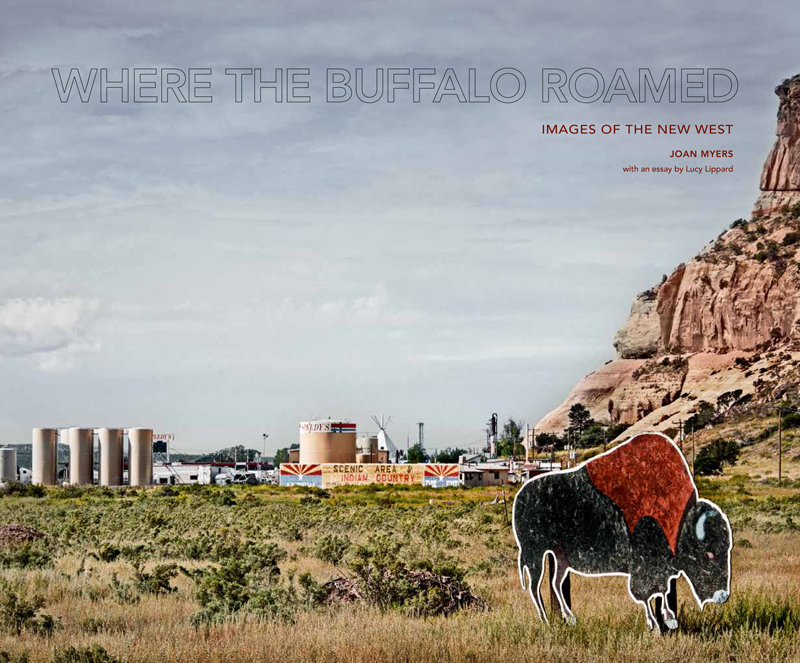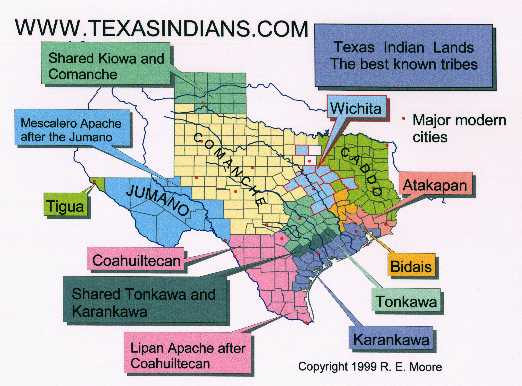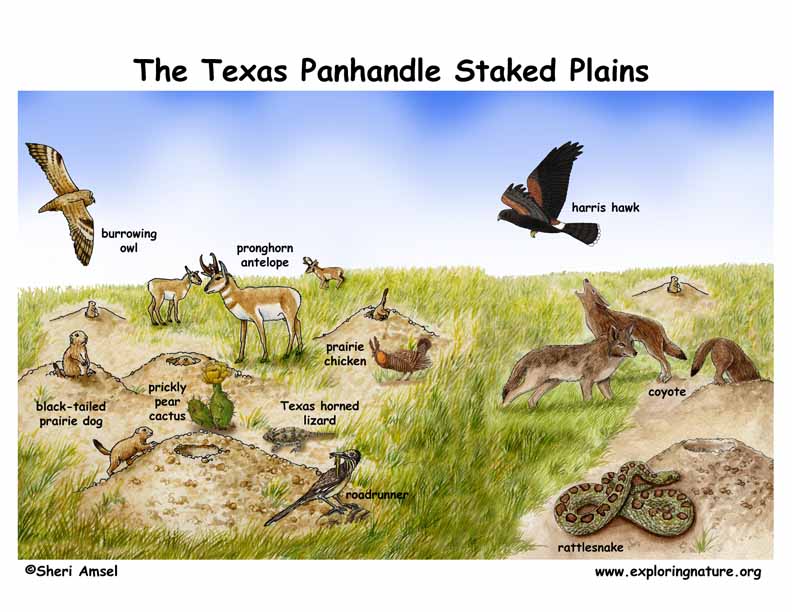The Texas Panhandle: Where Buffalo Roamed and Tribes Thrived
The Texas Panhandle: Where Buffalo Roamed and Tribes Thrived
The vast, windswept plains of the Texas Panhandle, a land of endless sky and rolling grasslands, holds a rich and complex history. It’s a history that’s been shaped by the people who called it home for millennia: the Native American tribes who roamed these lands long before the arrival of European settlers.
This article delves into the fascinating story of the Native American tribes who once thrived in the Texas Panhandle, exploring their unique cultures, their relationship with the land, and their enduring legacy.
Related Articles: The Texas Panhandle: Where Buffalo Roamed and Tribes Thrived
- Unveiling the Enchanting Tapestry of Oklahoma's Indian Reservations
- Unveil the Native American Heritage of New York State: Discoveries and Insights
- Unveiling Hidden Gems: Discover the Rich Landscape of Native American Reservations in Michigan
- How Much Beer, Et, Is Sold Right Outside The Rosebud Reservations South GateTitle
- Beyond The Reservation: Unveiling The Rich Tapestry Of Life In Tucson’s Indigenous Communities
The Land Before Time: A Landscape of Opportunity
The Texas Panhandle, with its diverse ecosystems ranging from the high plains to the canyons, provided a rich tapestry of resources for the Native Americans who lived there. The vast grasslands offered abundant grazing for buffalo herds, a cornerstone of their survival. The rivers, like the Canadian River and the Red River, provided water for both drinking and irrigation, while the fertile river valleys yielded a variety of edible plants and roots.
The panhandle’s unique geography also played a role in shaping the lives of its inhabitants. The rugged canyons, like Palo Duro Canyon, provided natural shelter and defense against enemies. These canyons also served as sacred sites, holding deep spiritual significance for the tribes who called them home.
A Tapestry of Tribes: Diverse Cultures and Traditions
The Texas Panhandle wasn’t just a single landscape; it was a mosaic of cultures. Several tribes, each with their own distinct language, customs, and beliefs, called this land home. Here are a few of the most prominent:
1. The Apache
The Apache, known for their fierce independence and nomadic lifestyle, were a formidable force in the panhandle. They were skilled hunters and warriors, adept at navigating the vast plains and utilizing their knowledge of the terrain to their advantage. Their unique culture emphasized self-reliance and a strong connection to the natural world.
2. The Comanche

The Comanche, often referred to as the "Lords of the Plains," were a powerful and influential tribe who dominated the southern Great Plains, including the Texas Panhandle. They were renowned for their equestrian skills and their fierce resistance to European encroachment. The Comanche developed a complex social structure, with a strong emphasis on family and kinship ties.
3. The Kiowa
The Kiowa, known for their distinctive clothing and elaborate headdresses, were nomadic hunters who roamed the Southern Plains. They were skilled at hunting buffalo and were known for their unique Sun Dance ceremony, a powerful ritual that honored the sun and the buffalo. Their culture was rich in storytelling and oral tradition, with tales passed down through generations.
4. The Wichita
The Wichita, a semi-nomadic people, were known for their skill in agriculture and their ability to adapt to different environments. They were settled farmers, cultivating corn, beans, and squash, and also relied on hunting and gathering. The Wichita were renowned for their craftsmanship, particularly their intricate pottery and beadwork.

5. The Caddo
The Caddo, a tribe with a long and rich history, were settled farmers who lived in the eastern portion of the panhandle. They were known for their sophisticated social structure, their elaborate ceremonial practices, and their remarkable skill in pottery and metalwork.
The Trail of Tears: The Impact of European Colonization
The arrival of European settlers in the 1800s marked a dramatic shift in the lives of the Native American tribes of the Texas Panhandle. The westward expansion of the United States brought with it conflict, disease, and displacement.
The tribes, who had long been stewards of the land, found themselves increasingly encroached upon by settlers seeking new territory. The buffalo, a vital source of sustenance and cultural identity, were hunted to near extinction, further disrupting the tribes’ way of life.

The government’s policy of forced removal, known as the "Trail of Tears," resulted in the displacement of many tribes from their ancestral lands. The forced marches were devastating, leading to loss of life, cultural disruption, and the erosion of traditional ways of life.
The Legacy of the Native Americans: A Story of Resilience
Despite the hardships they faced, the Native American tribes of the Texas Panhandle have shown remarkable resilience. They have fought to preserve their cultures, languages, and traditions, even in the face of adversity.
Today, their descendants continue to honor their ancestors and to advocate for the recognition and preservation of their history. Their story is a testament to the enduring spirit of their people and their deep connection to the land they call home.
The Texas Panhandle: A Land of Shared History
The story of the Native American tribes of the Texas Panhandle is an integral part of the region’s history. It’s a story of resilience, adaptation, and the enduring connection between people and their land.
By understanding their history, we gain a deeper appreciation for the rich tapestry of cultures that have shaped the Texas Panhandle. Their legacy reminds us of the importance of preserving our shared history and honoring the contributions of all who have called this land home.
FAQ
Q: What are some of the most significant archaeological sites in the Texas Panhandle?
A: The Texas Panhandle is home to several significant archaeological sites, including:
- Palo Duro Canyon State Park: This park boasts a wealth of archaeological evidence, including petroglyphs, rock shelters, and remnants of ancient settlements.
- Alibates Flint Quarries National Monument: This site was a major source of flint for Native Americans across the region, and it provides valuable insights into their tool-making techniques.
- The Blackwater Draw Site: This site, located near Clovis, New Mexico, has yielded some of the earliest evidence of human occupation in North America, including the iconic Clovis points.
Q: What are some of the key cultural practices of the Native American tribes of the Texas Panhandle?
A: The tribes of the Texas Panhandle had a diverse range of cultural practices, including:
- Buffalo Hunting: Buffalo was a central part of the lives of many tribes, providing food, clothing, shelter, and tools.
- Sun Dance: The Sun Dance, a powerful ritual honoring the sun and the buffalo, was practiced by the Kiowa and other tribes.
- Ceremonial Dances: Many tribes had elaborate ceremonial dances, often associated with specific events or seasons.
- Storytelling: Oral tradition was a vital part of many Native American cultures, with stories passed down through generations.
Q: What are some of the ways that the legacy of Native Americans is being preserved in the Texas Panhandle today?
A: The legacy of Native Americans is being preserved in the Texas Panhandle in a variety of ways, including:
- Museums and Cultural Centers: Several museums and cultural centers in the region showcase the history and culture of Native Americans.
- Tribal Organizations: Many tribes have their own organizations dedicated to preserving their culture and traditions.
- Educational Programs: Schools and universities are increasingly incorporating Native American history and culture into their curricula.
- Community Events: Many communities host events celebrating Native American culture, such as powwows and storytelling festivals.
Q: How can I learn more about the history of Native Americans in the Texas Panhandle?
A: There are many resources available to learn more about the history of Native Americans in the Texas Panhandle, including:
- Museums and Cultural Centers: Visit local museums and cultural centers to learn about the history and culture of the region’s Native American tribes.
- Tribal Websites: Many tribes have their own websites that provide information about their history, culture, and current activities.
- Books and Articles: There are a wealth of books and articles available on the history of Native Americans in the Texas Panhandle.
- Online Resources: The internet offers a wealth of information on Native American history and culture.
The Texas Panhandle’s history is a rich tapestry, woven with the stories of the people who have called it home. By understanding the history of the Native American tribes who once thrived in this land, we can gain a deeper appreciation for the region’s past and its enduring legacy. Their story is a reminder that we are all part of a shared history, and that the past continues to shape our present.

Closure
Thus, we hope this article has provided valuable insights into The Texas Panhandle: Where Buffalo Roamed and Tribes Thrived. We thank you for taking the time to read this article. See you in our next article!